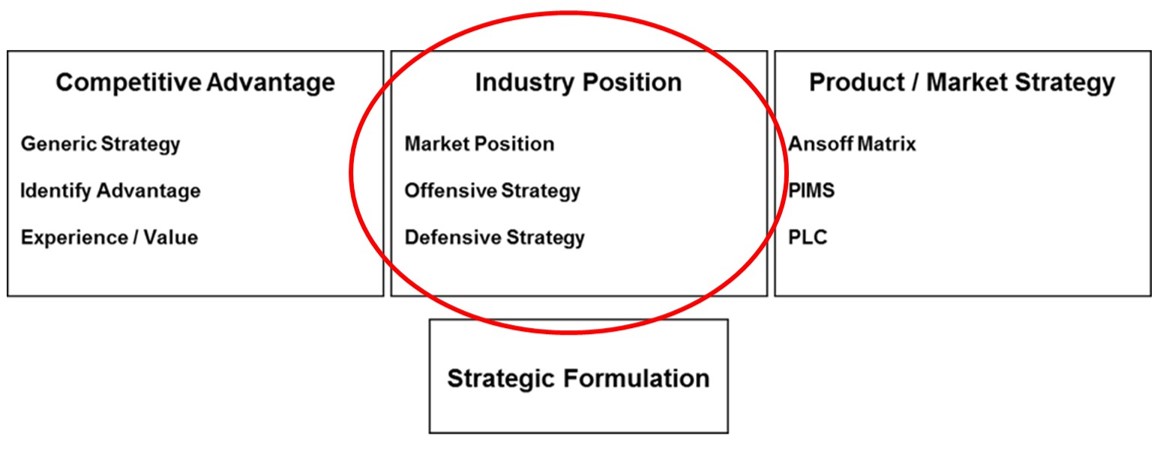
The position of the organisation (or product) within a given market will clearly influence the strategic options available. For example, when comparing the market leader with a smaller ‘niche’ competitor, it is likely that marked differences exist in: aims, capabilities and resources. When considering a market, competitors break down into four general categories: market leaders, market challengers, market followers and market niches. Each will be examined in turn.

Market Leaders

A market leader is dominant within the given industry or segment. This dominance is normally due to market share. However, some organisations may achieve ‘leadership’ through innovation or technical expertise. Additionally, the organisation may only be a leader in a given segment (e.g. geographic area). Be careful how the term ‘market’ is defined when talking about market leaders. The market leader will be a constant target for aggressive competitors and must remain vigilant and proactive. Common strategies include:
Expanding the market: If the total market expands, the leader tends to gain the largest share of this expansion. This can be achieved by finding new users or new uses for the products and by encouraging more use by existing customers.
Offensive strategy: By aggressively pursuing market share, the fight is taken to the competitors.
Defensive strategy: It is equally important to protect your existing customer base and ensure that market share is retained. Offensive and defensive strategies are applicable to all industry ‘players’ not just market leaders.
Market Challengers

Market challengers will seek confrontation and aggressively pursue market share. Often, such organisations are large and well resourced. They are seeking market leadership and present a long-term sustained challenge to the current leader. Strategies available to challengers include:
Selective targeting: The challenger can target specific competitors. It may attack smaller (perhaps regional) competitors or firms that are equivalent in size and resources. The challenger is looking to attack weaker competitors – those failing to satisfy the customer in some way, or those underfinanced or resourced. By picking-off weaker competitors, challengers enhance their market position.
Attack the leader: The challenger can directly challenge the dominant player. This is often a long-term war of attrition and it is unlikely that market leadership will change overnight. Commonly, direct attacks sustained over time erode market share gradually.
Market Follower

Being in second, third or even further down the rankings within an industry may still be an attractive position. Market followers tend to ‘shadow’ the market leader as opposed to challenge them, unless there is a high degree of certainty that a challenge will be successful – they follow the leader. In simple terms, followers duplicate (to greater or lesser degree) the actions and product offerings of the bigger industry players and avoid ‘rocking the boat’.
Typical strategies are:
Duplication: The product offering is duplicated in every possible way, even down to the packaging and promotion. Such strategies are potentially open to legal challenge in the areas of patents and copyright.
Adaptation: Here we adapt the basic product offering. If we can improve on the concept, then potential exists to differentiate ourselves. For example, we may sell the same/similar products but have a reputation for higher levels of customer service.
Market Niche

Niche players focus on specific market segments. They are more specialised in nature and seek to gain competitive advantage by adding value in some way appropriate to specific target groups. Focus and commonly involve geographic, end-user or product line specialisation.
Click here to view a video that explains market leader vs market follower vs market challenger.